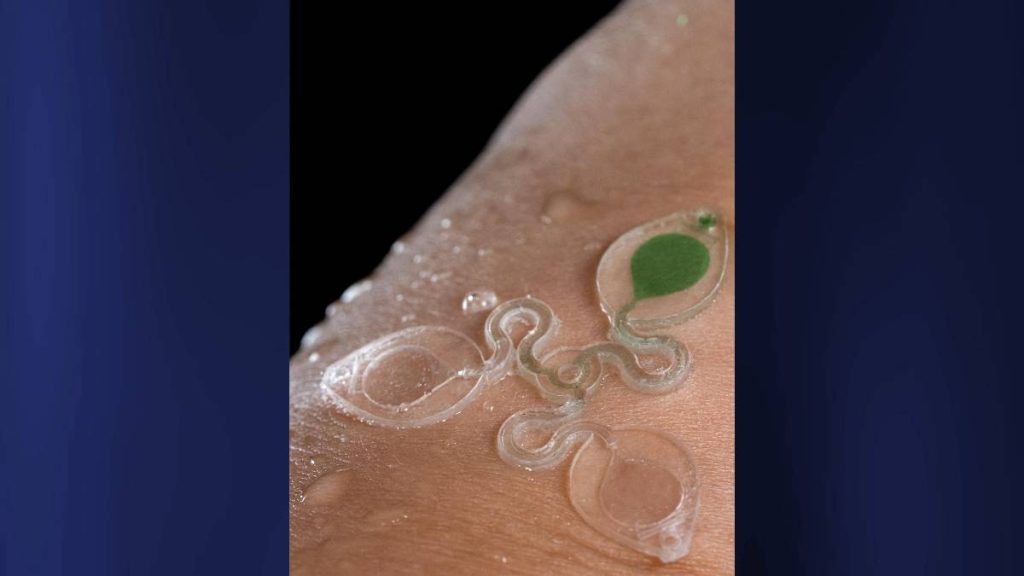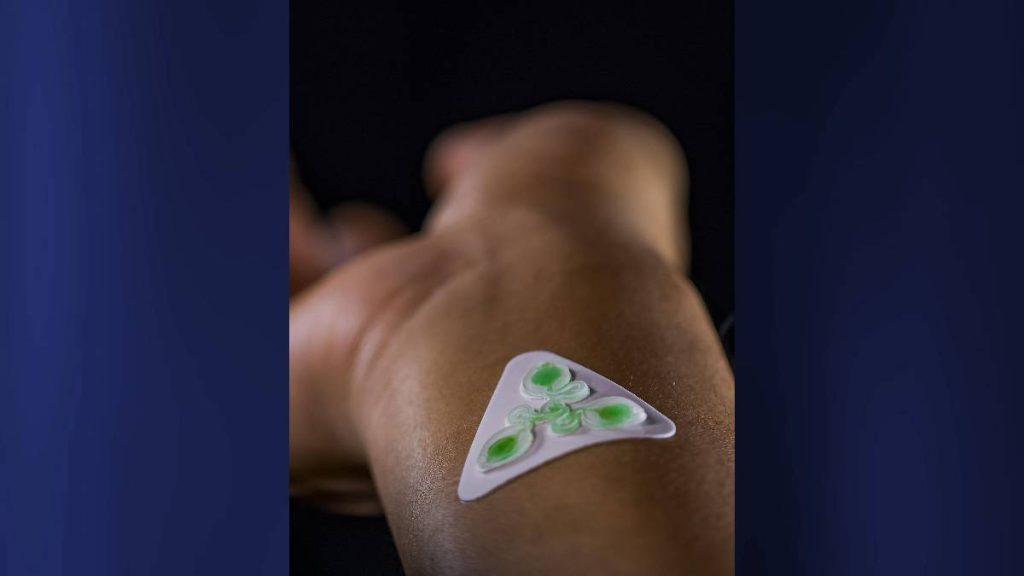‘Sweatainer’ health monitoring device created by Hawai‘i researchers

Sweat holds vital information about our health, providing clues to dehydration, fatigue, blood sugar levels and even serious conditions such as cystic fibrosis, diabetes and heart failure.
Researchers at the University of Hawaiʻi at Mānoa College of Engineering have taken a giant leap forward in sweat analysis with a 3D-printed wearable sweat sensor called the “sweatainer.”
“3D-printing enables an entirely new design mode for wearable sweat sensors by allowing us to create fluidic networks and features with unprecedented complexity,” Department of Mechanical Engineering Assistant Professor Tyler Ray said.
Traditional approaches for sweat collection use absorbent pads or microbore (very narrow) tubes pressed against the epidermis (surface layer of the skin) using bands or straps to capture sweat as it emerges from the skin. These techniques require trained personnel, special handling and costly laboratory equipment.

The recent emergence of wearable sweat sensors has addressed some of these challenges, but these devices still remain single-use. When the device is full, it must be removed and the sweat collection be stopped.
One unique feature of the sweatainer is its “multi-draw” sweat collection method, which allows for the collection of multiple, separate sweat samples for analysis either directly on the device or sent to a lab. Inspired by the vacutainer used in clinical blood sampling, this advancement not only makes sweat collection more efficient but also opens up new possibilities for at-home testing, storing samples for future research and integrating with existing health monitoring methods.
Field studies of the sweatainer system highlight the real-world potential of this groundbreaking technology. Through the blueprint established in the sweatainer, the researchers hope that this will continue to drive innovation to create a future where personal health monitoring is more accessible, convenient and insightful.














